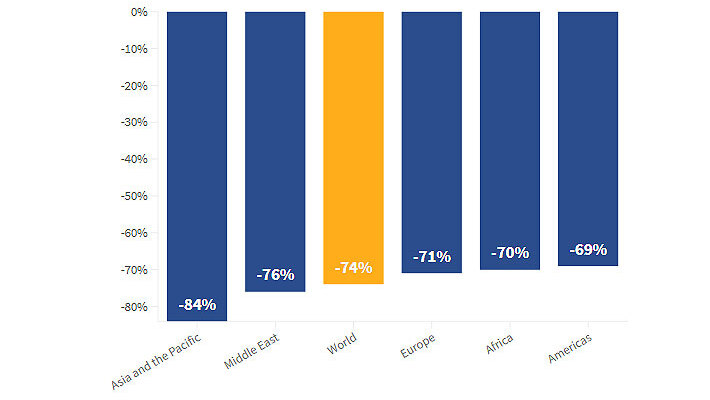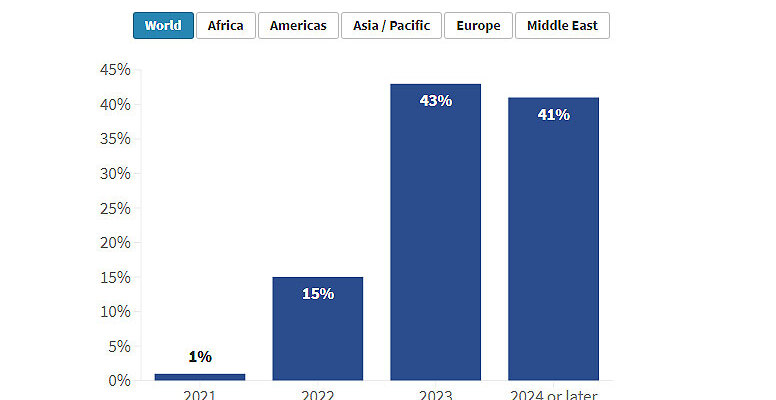According to the latest data from the World Tourism Organization (UNWTO), world tourism experienced the worst year, which was a record in 2020, and the number of international tourists decreased by 74%. Destinations worldwide received 1 billion fewer international arrivals in 2020 than in the previous year, due to an unprecedented drop in demand and widespread travel restrictions. This is compared to a 4 percent drop recorded during the 2009 global economic crisis.
According to the latest UNWTO report, losses in export earnings amounted to 1.3 trillion. dollars US, which is 11 times more than the losses recorded during the global economic crisis of 2009. The crisis has threatened between 100 and 120 million direct tourism jobs, many of them in small and medium-sized enterprises.

Due to the nature of the evolving pandemic, many countries are now re-imposing stricter travel restrictions. These include mandatory testing, quarantine, and in some cases complete closure of borders, which affects the resumption of international travel. At the same time, the gradual introduction of the COVID-19 vaccine is expected to help restore consumer confidence, ease travel restrictions and slow travel normalization over the next year.
UNWTO Secretary-General Zurab Pololikashvili said: “While much has been done to make safe international travel possible, we recognize that the crisis is far from over. Harmonization, coordination and digitization of COVID-19 travel risk mitigation measures, including testing, tracking and vaccination certificates are important frameworks to promote safe movement and prepare for the resumption of tourism when conditions allow. “
The prospects for recovery remain cautious
The latest survey by the UNWTO Group shows ambiguous prospects for 2021. Almost half of the respondents (45%) predicted better prospects for 2021 compared to last year, while 25% expect similar results, and 30% expect worsening results in 2021.
The overall outlook for the rebound in 2021 seems to have deteriorated. Currently, 50% of respondents expect that the recovery will take place only in 2022, compared to 21% in October 2020. The remaining half of respondents still see a potential rebound in 2021, although below the expected results of the October 2020 survey (79% expected a recovery in 2021). As and when tourism resumes, the UNWTO expert group anticipates a growing demand for open-air tourism and nature, with increasing interest in domestic tourism and the experience of “slow travel”.

Looking ahead, most experts do not see a return to pre-pandemic levels by 2023. In fact, 43% of respondents point to 2023, while 41% expect that the return to the level of 2019 will occur only in 2024 or later. Extended UNWTO scenarios for 2021-2024 indicate that it may take two and a half to four years for international tourism to return to 2019 levels.
All regions of the world were affected
Asia and the Pacific (-84%), the first region affected by the pandemic and the region with the highest level of travel restrictions currently in place, saw the largest decline in arrivals in 2020 (300 million less). The Middle East and Africa saw a 75% decline.

Europe saw a 70% decrease in arrivals, despite a small and short-lived recovery in the summer of 2020. The biggest drop in the region was in absolute terms – in 2020, 500 million less international tourists. in international arrivals, after slightly better results in the last quarter of the year.

